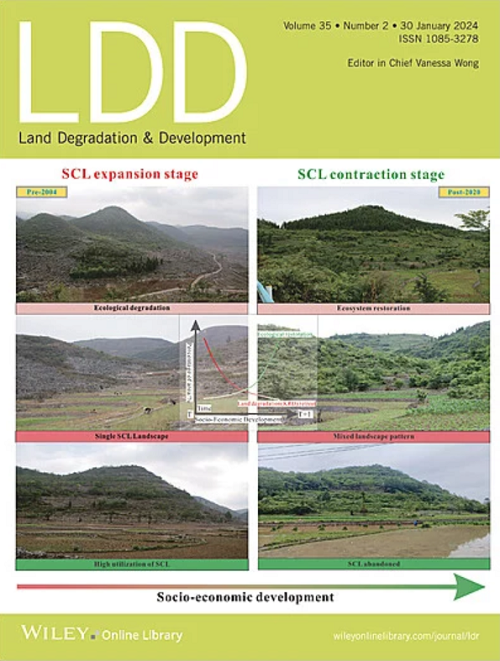Effects of Diaspore Traits and Vegetation Structures on Wind Dispersal of Solanum rostratum Using Wind Tunnel Simulations
IF 3.6
2区 农林科学
Q2 ENVIRONMENTAL SCIENCES
引用次数: 0
Abstract
The effects of diaspore traits and vegetation structure (VS) on the wind-dispersal processes of an invasive alien tumbleweed Solanum rostratum are not well understood. In this study, we used a wind tunnel to determine the wind velocity required for stem breakage of the plant. VSs of bare ground, desert steppe, typical steppe, and meadow steppe were simulated to determine the threshold wind velocity (TWV) of the plant (diaspore) and to measure diaspore velocity (DV) at wind velocities of 2, 4, 6, 8, 10, 12, and 14 m s−1. The results showed that the stem of the plant did not break, even at a wind velocity of 14 m s−1. The TWV is so high (> 6 m s−1 on bare ground) that the diaspore could not move on the meadow steppe at a wind velocity of 14 m s−1. Diaspore morphological traits and VS were key factors affecting the TWV, contributing 40.6% and 40.5%, respectively. Wind velocity, VS, and diaspore traits were the significant factors affecting DV, contributing 70.6%, 13.5%, and 6.6%, respectively. The DV significantly decreased from bare ground, desert steppe to typical steppe, and even remained still at a wind velocity of 14 m s−1 on the meadow steppe. Therefore, the diaspore adopts an anti-long-distance wind-dispersal strategy when the plant stem does not break, or the diaspore adopts a non-long-distance wind-dispersal strategy once the plant stem breaks. Understanding the wind-dispersal mechanism of S. rostratum is of practical significance for predicting its distribution, controlling its spread range, and promoting the restoration of degraded vegetation.一水硬石性状和植被结构对龙葵风传播的影响
一水硬石性状和植被结构对外来入侵风滚草龙葵风传播过程的影响尚不清楚。在这项研究中,我们使用风洞来确定植物茎断裂所需的风速。通过模拟裸地、荒漠草原、典型草原和草甸草原的一水硬石初始风速(VSs),测定一水硬石在2、4、6、8、10、12和14 m s−1风速下的阈值风速(TWV)和DV。结果表明,即使在14 m s−1的风速下,植株茎部也没有断裂。由于TWV过高(在裸地上为6 m s−1),一水硬石在14 m s−1的风速下无法在草甸草原上移动。一水硬铝石形态性状和VS是影响TWV的关键因素,分别占40.6%和40.5%。风速、VS和一水硬石性状是影响DV的显著因子,贡献率分别为70.6%、13.5%和6.6%。草甸草原在风速为14 m s−1的情况下,DV从裸地、荒漠草原到典型草原显著减小,甚至保持不变。因此,一水硬石在植物茎不断裂时采取反长距离风散策略,而在植物茎断裂时采取非长距离风散策略。了解刺槐的风传播机制对预测其分布、控制其传播范围、促进退化植被的恢复具有重要的现实意义。
本文章由计算机程序翻译,如有差异,请以英文原文为准。
求助全文
约1分钟内获得全文
求助全文
来源期刊

Land Degradation & Development
农林科学-环境科学
CiteScore
7.70
自引率
8.50%
发文量
379
审稿时长
5.5 months
期刊介绍:
Land Degradation & Development is an international journal which seeks to promote rational study of the recognition, monitoring, control and rehabilitation of degradation in terrestrial environments. The journal focuses on:
- what land degradation is;
- what causes land degradation;
- the impacts of land degradation
- the scale of land degradation;
- the history, current status or future trends of land degradation;
- avoidance, mitigation and control of land degradation;
- remedial actions to rehabilitate or restore degraded land;
- sustainable land management.
 求助内容:
求助内容: 应助结果提醒方式:
应助结果提醒方式:


